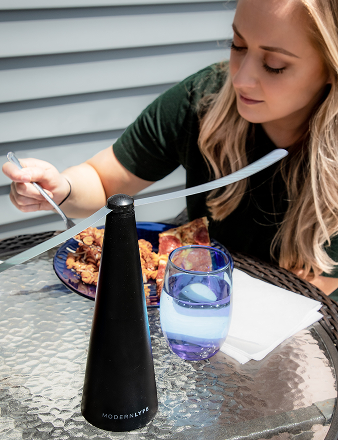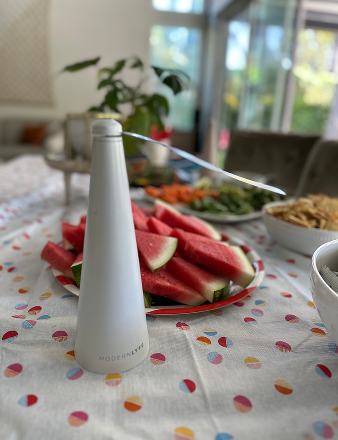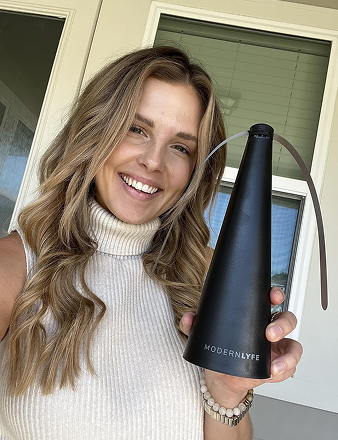The best fly repellent for windows is a complete strategy, not a single product. It's about creating layers of defense. By combining physical barriers like screens with natural deterrents or targeted sprays, you can make your home a no-fly zone.
Why Your Windows Are a Magnet for Flies
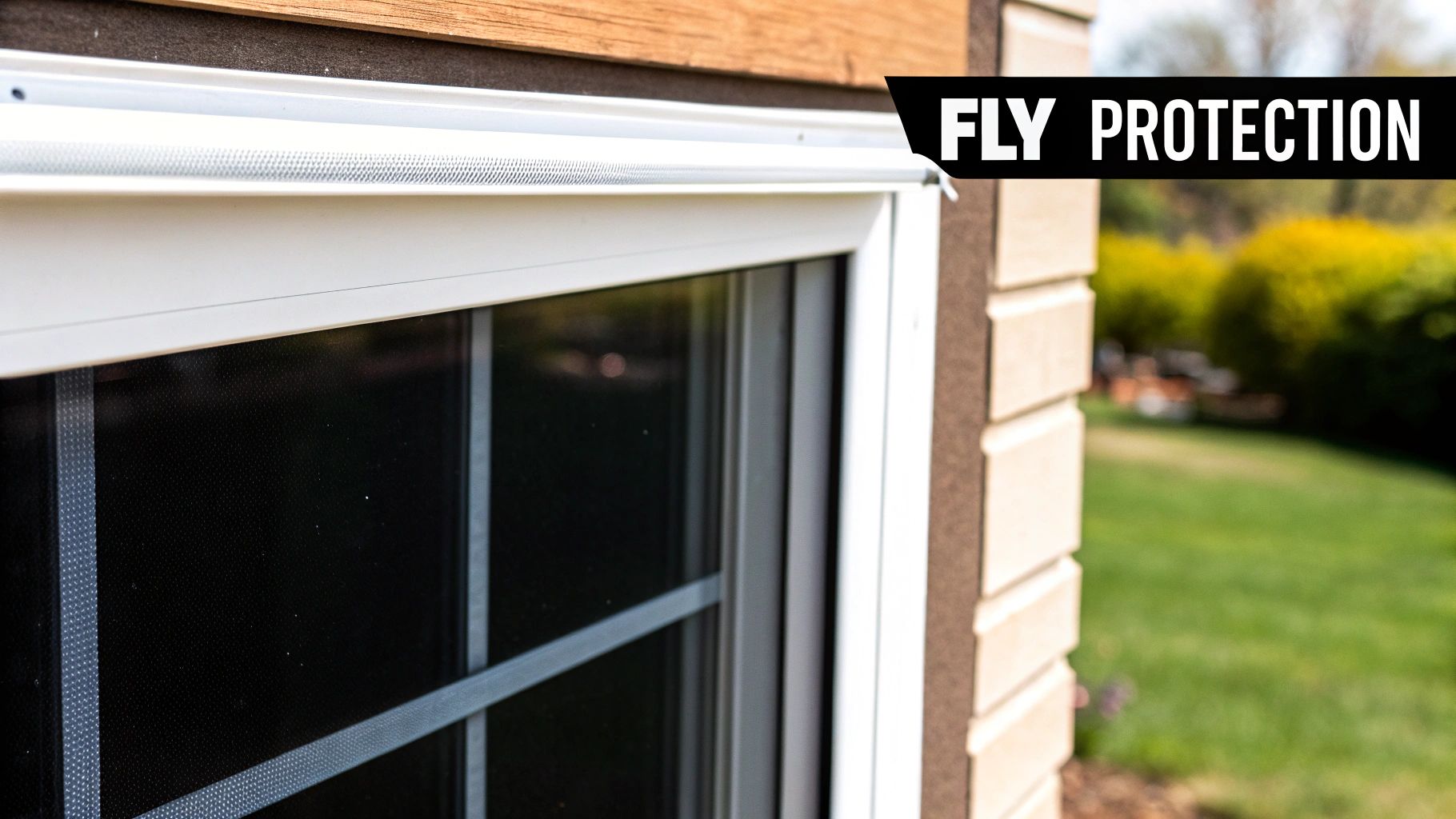
If your windows feel like a fly convention, you're not imagining it. To a fly, your windows are powerful beacons, and their attraction is driven by simple, hard-wired instincts.
It starts with light. Flies navigate using the sun's UV rays, and their compound eyes are highly sensitive to it. When a fly is trapped inside, a bright window looks like the most obvious exit. This is why they buzz endlessly against the glass, confused by the invisible barrier.
The Science of Attraction
Warmth is another major factor. A sunbeam hitting a window pane creates a perfect sunbathing spot. As cold-blooded insects, flies depend on external heat to regulate their body temperature and stay active.
Finally, windows are a microscopic buffet. They collect condensation, dust, and tiny organic particles. What looks like a clean window to us can be a source of food and water for a fly. Combine these factors, and it's clear why windows are their favorite hangout.
A layered defense is the most effective strategy. Think of it like home security for pests—multiple systems in place to deter intruders at every entry point.
Your Roadmap to a Fly-Free Home
This guide is your roadmap to building that defense. We'll break it down into three core strategies so you can find the right fly repellent for windows for your home:
- Physical Barriers: We’ll cover screens and other physical solutions that simply block flies out.
- Chemical Repellents: This includes sprays and treatments that deliver immediate results.
- Natural Solutions: You'll learn about DIY recipes and plant-based options for a non-toxic approach.
While we're focused on windows, remember they aren't the only entry point. For a complete plan, see our guide on using door fans to keep bugs out to secure other common problem areas.
What Are Your Best Options for Window Fly Repellents?
Figuring out how to keep flies off your windows is straightforward. It just comes down to choosing the right tool for the job. Most options fall into a few common categories, each with a different method of action.
Some solutions act as a long-term, invisible fence, while others are more like a rapid-response team. Knowing the difference is key to getting your windows fly-free for good.
Comparing Repellent Strategies
Your main choice is between chemical-based products and natural or physical methods. This decision affects application, duration, and safety—especially if you have children or pets.
To give you a clearer picture, here are the key differences in how long they last, how safe they are, and what they might cost.
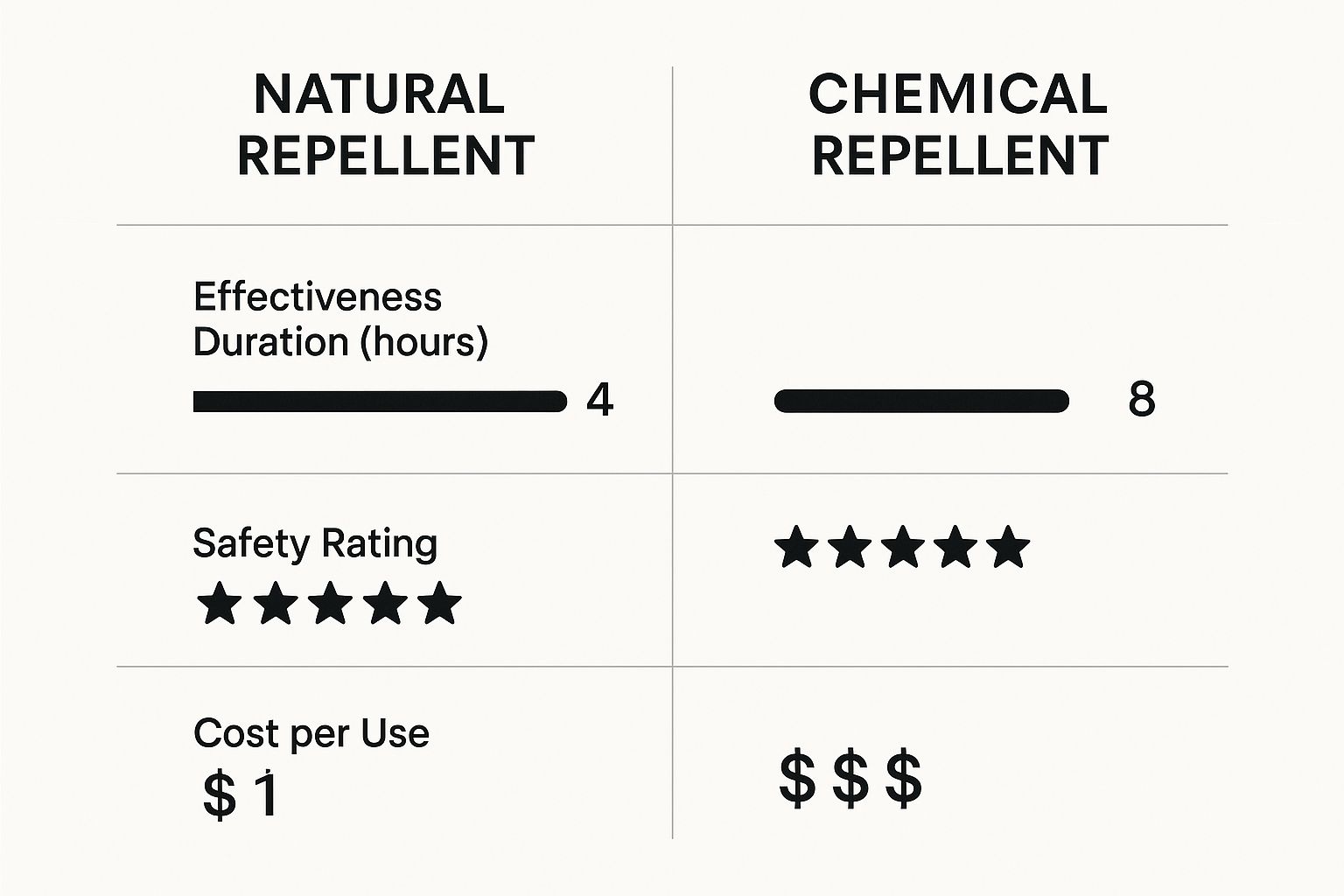
As you can see, chemical options often provide longer protection. On the other hand, natural alternatives are generally safer, making them a popular choice for homes with kids or pets.
Here are the main types of fly repellent for windows you'll encounter:
- Insecticide-Treated Screens & Films: This is your set-it-and-forget-it solution. They provide a constant, low-dose barrier, offering passive, long-term protection right on the surface where flies land.
- Repellent Sprays: Need a quick fix? Sprays are your go-to for immediate results. They create a temporary no-fly zone on and around your windows, perfect for tackling a sudden fly problem.
- Window Fly Traps: These are discreet and effective. Usually clear adhesive strips, they stick directly to the glass, using the window's light to attract and trap flies, quietly reducing their numbers.
Consumers are actively seeking better ways to handle pests. The global fly repellent market is expected to reach nearly $5.97 billion by 2030. This growth reflects the demand for solutions that are both effective and safe for home use. You can read the full research about the fly repellent market to see how various products are meeting this need.
Comparing Window Fly Repellent Methods
To simplify your choice, here’s a quick-glance table breaking down the most common approaches. This should help you pinpoint the best method for your needs.
| Repellent Type | How It Works | Best For | Avg. Duration |
|---|---|---|---|
| Insecticide-Treated Film/Screen | A surface treated with a low-dose insecticide that repels or kills flies on contact. | Long-term, passive protection for windows that are frequently open. | Months |
| Chemical Repellent Spray | Creates an immediate, invisible chemical barrier on glass and frames to deter flies. | Quick action against a sudden fly problem or for short-term prevention. | Hours to Days |
| Adhesive Window Traps | A clear, sticky strip that uses light to attract flies, trapping them on contact. | Discreetly catching existing flies indoors without sprays or chemicals. | Weeks |
Ultimately, the best choice depends on whether you're dealing with a constant stream of flies or just an occasional intruder.
Top Commercial Fly Repellents for Windows

When you need something that works right now, commercial products offer a powerful line of defense. These repellents are specifically formulated to target flies and keep your windows clear. Understanding what's in the product helps you choose the right tool for the job.
Most effective sprays use pyrethroids, synthetic compounds that mimic the natural insect-repelling properties of chrysanthemum flowers. They act fast, disrupting a fly’s nervous system on contact. For a longer-lasting solution, some window screen treatments and films are embedded with permethrin, a more durable pyrethroid that can remain effective for weeks or even months.
Popular Commercial Product Types
When shopping for a commercial fly repellent for windows, you'll find a few main types. Each serves a slightly different purpose.
- Aerosol Sprays: These are your rapid-response team. They create an instant barrier on glass without leaving a messy residue. Always check the label for "non-staining" to ensure your panes and frames stay clean.
- Transparent Adhesive Traps: These are the silent assassins of the fly world. They are small, clear sticky strips placed in the corner of a window. Flies are drawn to the light, get stuck, and the problem is handled quietly.
- Treated Screens or Films: For a "set it and forget it" approach, insecticide-treated screens offer continuous, passive protection. Once installed, they work 24/7 without any further action from you.
Always read the product label before use. Pay close attention to safety instructions, especially if you have pets or small children, to ensure correct and safe application.
Finding these products is easier than ever. Online retail provides access to a huge range of fly control options, which has fueled market growth. You can see just how much the flies repellent market is expanding on fortunebusinessinsights.com.
While these commercial options are excellent for windows, a truly fly-free home requires a multi-pronged strategy. For open spaces like patios, consider the best fly repellent fan to complement your window treatments.
Go Natural with DIY Fly Repellents for Windows
If you prefer to avoid chemicals, some of the best fly-fighting tools may already be in your kitchen. Creating your own fly repellent for windows is easy, cost-effective, and gives you control over what you're spraying in your home.
The science behind these natural solutions is simple: they overwhelm a fly's senses. Flies have a powerful sense of smell that guides them. By introducing a strong scent they dislike, you create a "no-fly zone" around your windows.
Set a Simple Vinegar Trap
The classic apple cider vinegar trap is a proven method because it works. The fermented smell attracts houseflies, luring them away from your glass and into a trap they can't escape.
- Pour: Fill a small jar or bowl with about an inch of apple cider vinegar.
- Add Soap: Squeeze in a few drops of dish soap. This is the crucial step; it breaks the vinegar's surface tension, causing flies to sink when they land.
- Place: Set the trap on the windowsill where you see the most fly activity.
Mix a Powerful Essential Oil Spray
Certain essential oils contain compounds that insects can't stand. A simple spray lets you apply these scents directly to window frames and screens, creating an invisible barrier that tells flies to stay away.
Flies particularly dislike the potent aromas from these plants:
- Peppermint: Its sharp, minty fragrance overwhelms a fly's sensitive smell receptors.
- Lavender: While calming to us, its floral notes are a major deterrent for flies.
- Eucalyptus: This oil contains eucalyptol, a well-known natural insect repellent.
To make the spray, add 10-15 drops of your chosen oil to a spray bottle filled with water. Add a splash of witch hazel to help the oil and water mix, then shake well. Lightly mist your window frames every few days.
Natural solutions require reapplication. Unlike chemical sprays, you'll need to reapply your essential oil spray or refresh your vinegar trap every few days to maintain effectiveness.
Another trick is to use plants as allies. A window box with herbs like basil, mint, and rosemary not only looks good but also continuously releases fly-repelling scents, creating a living defense system on your windowsill.
How to Choose the Right Fly Repellent for Your Home
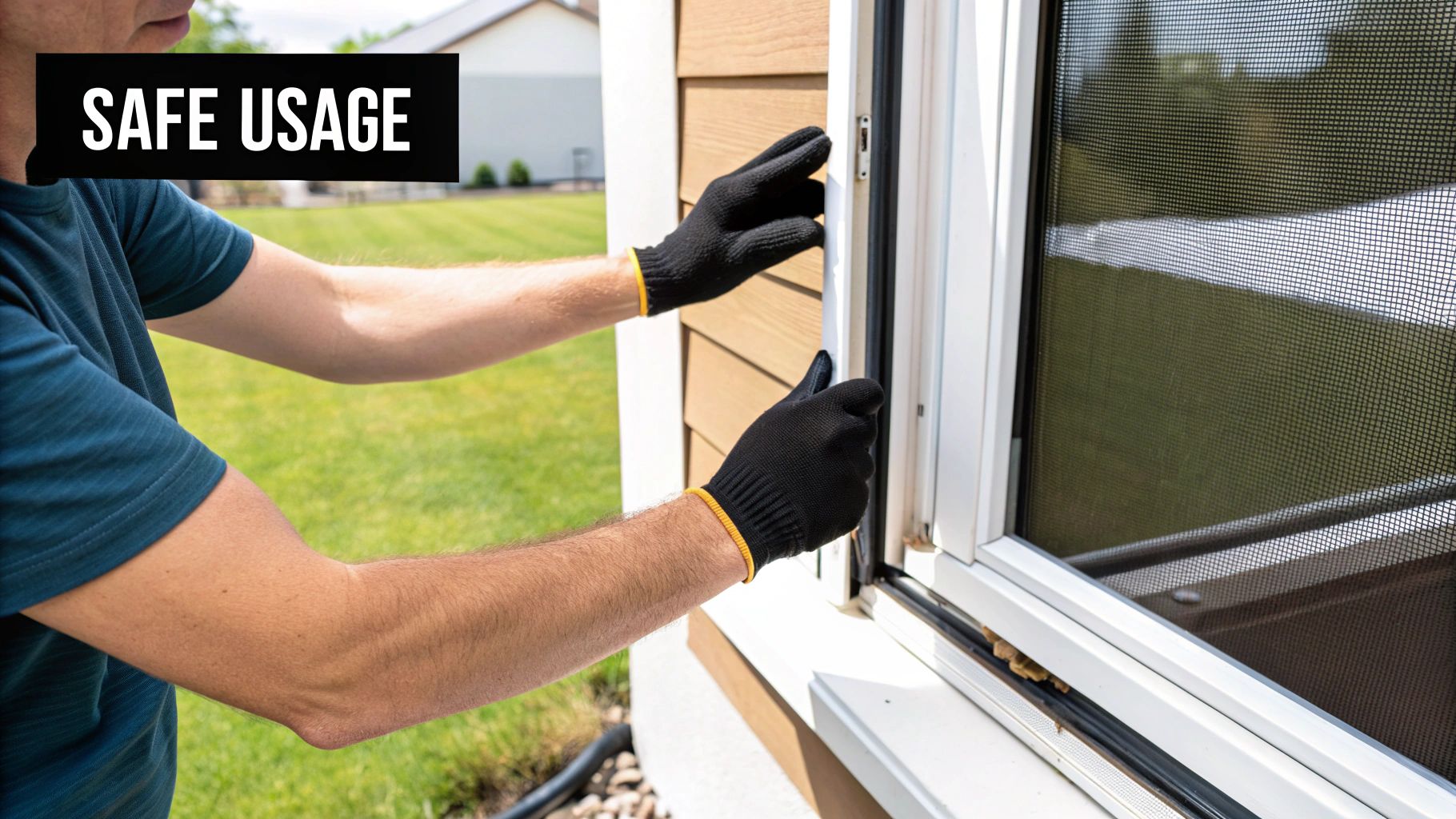
Finding the right fly solution is about more than grabbing the first spray you see. The best fly repellent for windows is one that fits your home, family, and lifestyle. A little planning now can save you a lot of frustration later.
First, consider who you share your home with. If you have pets or small children, safety is the top priority. This is where non-toxic and natural options, like essential oil sprays or sticky traps, are preferable to chemical-based products.
Next, assess the scale of your fly problem. Are you dealing with a few occasional stragglers, or is it a full-blown invasion every time you open a window?
For a few flies, a simple windowsill trap may be sufficient. For a serious infestation, you'll want to layer your defenses with a more comprehensive strategy.
Key Factors to Consider
Every home is different, and these unique details matter when choosing a repellent. Before deciding, think through these points to find a practical solution that will work for you.
- Window Type: A clear repellent film is ideal for a fixed picture window, while a treated screen is better for a casement window you open frequently.
- Climate and Season: If you live in a warm, humid climate, fly season can be a year-round battle. In this case, a long-lasting solution like treated screens is a better investment than constantly reapplying sprays.
- Budget: DIY solutions are inexpensive, while commercial products offer convenience for a higher price.
The demand for effective repellents is booming. The global fly repellent market was valued at USD 4.64 billion and is projected to hit USD 8.32 billion by 2030. This growth ensures that more and better choices are always becoming available. You can discover more insights about the fly repellent market on maximizemarketresearch.com.
For a modern, chemical-free way to protect entire rooms, not just windows, see our guide on how a fly fan can keep your space buzz-free.
Answering Your Top Questions About Window Fly Repellents
How Can I Stop Flies from Gathering on My Windows?
The best way to stop flies from congregating on your windows is prevention. Start by fly-proofing the most common entry points.
First, thoroughly inspect your window screens. Even a tiny hole or gap is an open invitation. Flies are also drawn to light and food residue, so keeping windowsills clean is a surprisingly effective tactic. Wiping down ledges and tracks removes a major attractant.
Use this quick checklist to get started:
- Inspect and repair all screen damage, no matter how small.
- Regularly clean window tracks and sills.
- Dim indoor lights near windows at night to make them less of a beacon.
Comparing Repellent Technologies
Are Electronic Fly Repellents Good for Windows?
Ultrasonic devices claim to repel pests with high-frequency sound, but scientific evidence does not support their effectiveness against houseflies.
A much better electronic solution is a compact UV light trap placed near the window. These devices use a specific light wavelength that flies find irresistible. Once drawn in, they are caught on a sticky pad or zapped. Many users report a dramatic drop in flies—some up to 90%—after one month of use.
- They are quiet and use very low energy.
- Most are small enough to sit on a windowsill.
- The sticky pad needs to be replaced every 2-4 weeks.
"A small UV trap acts like a silent guard for your window." — Jane Smith, Pest Control Pro
Preparing Sprays Safely
Will Fly Repellent Spray Damage My Windows or Frames?
Most indoor fly sprays are formulated to be non-staining on glass, but it's always wise to be cautious. Before applying everywhere, perform a quick spot test. This simple step can prevent a major headache.
Here's how to do it correctly:
- Choose a small, inconspicuous spot on the window frame or a corner of the glass.
- Apply a light mist and let it sit.
- Check for any discoloration or residue after 10 minutes.
- If it looks fine, you can proceed to spray the screen or exterior frame.
Avoid drenching the glass. Too much spray can cause moisture to seep into the window seals over time. Use short, light bursts and let the surface dry completely.
Ready for a more elegant, hassle-free solution to keep flies out? Upgrade to a sleek, quiet fly fan that blends with your décor.
MODERN LYFE: https://modernlyfe.com


